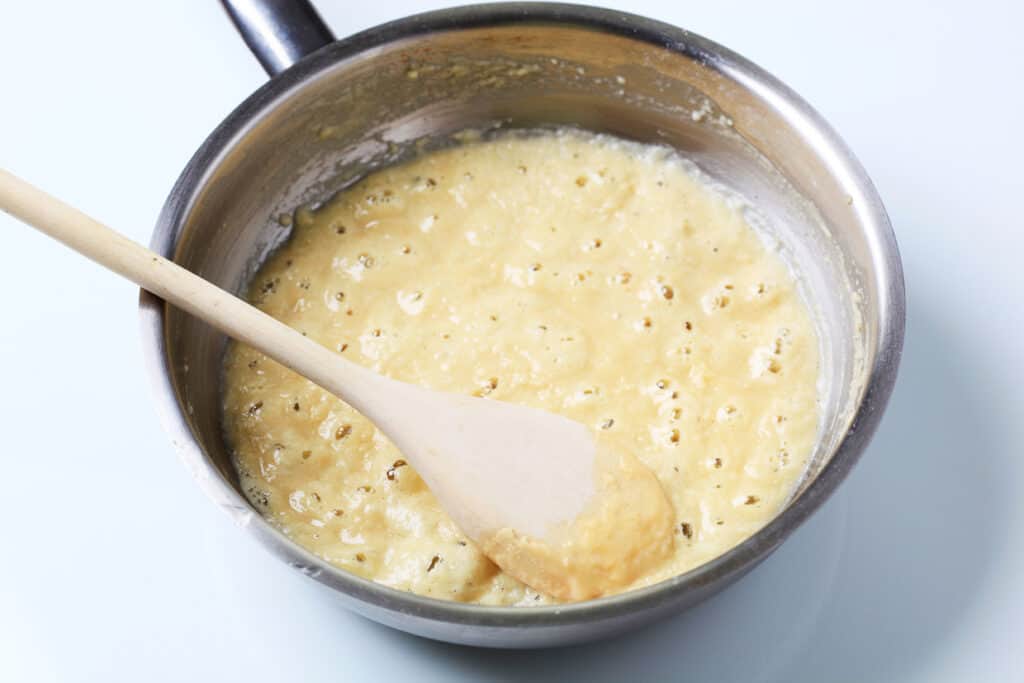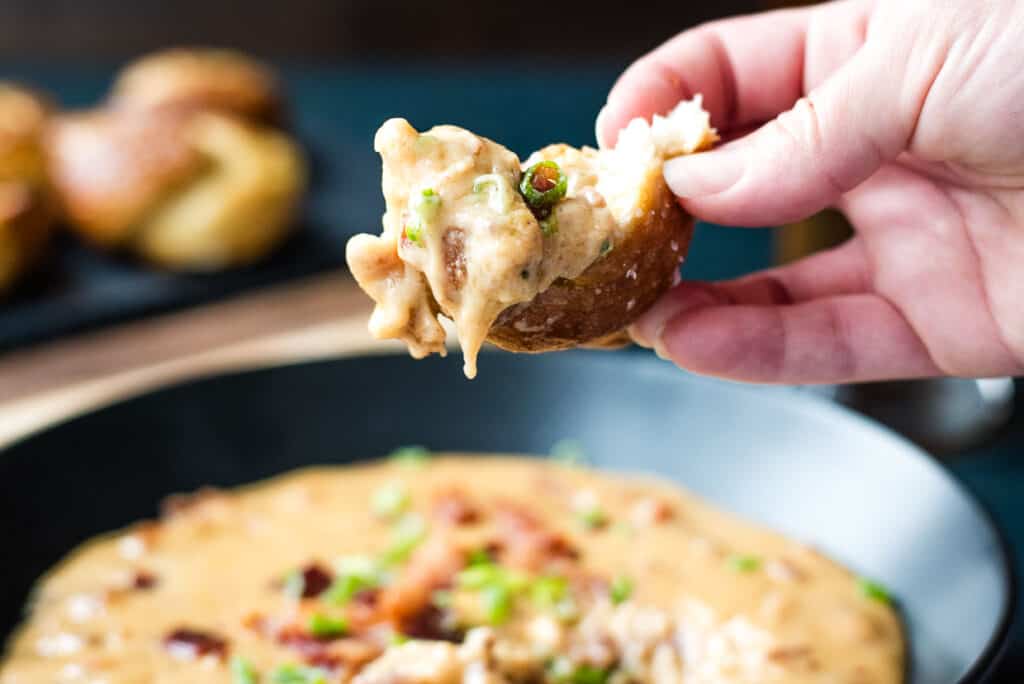What do decadent sauces, thick creamy soups and gorgeous gravies all share? The roux. As a combination of butter and fat, it transforms texture and flavor to thicken sauces and create deliciously rich consistencies. Learning how to make a roux and when to use it will help you become a better cook.

The roux
A roux is the combination of fat and flour with heat. Its job is to thicken liquids in sauces, stews and soups to improve their texture and enhance their flavor. Cooking the flour in fat activates an enzyme that prevents the flour from clumping when added to liquids. This not only creates a more stable thickener but also makes it a great option for thickening larger quantities of soups and stews.
Typically, the fat used in a roux is butter or clarified butter, but it can also be made from vegetable oils or rendered fats, like bacon grease. Keep in mind that the type of fat you use in the roux will impact the final flavor of the dish. The smokiness of bacon, nuttiness of butter or sweetness of unrefined coconut oil can enhance your dish just as easily as ruin it.
The flour component is most often all-purpose wheat flour due to its starch and protein content. Glutinous rice flour can be used as an equal swap to achieve similar results in a gluten-free kitchen. Other wheat flour types will have different ratios of starch and protein, which will affect their thickening capabilities. Use the flour specified in the recipe, but when in doubt, use all-purpose.
Types of roux
The basic flour and butter roux is one of the most common thickeners in the home kitchen. There are four main types, all of which are named after the color that develops as the flour cooks. Lighter-colored roux is cooked less, giving it a stronger ability to thicken, while the darker-colored version has a more pronounced flavor and aroma.
- White roux cooks just long enough to bring the ingredients together. It has a white to pale yellow color that comes more from the butter than the cooking process.
- Blonde roux cooks to a golden-yellowish color with a slightly nutty aroma.
- Brown roux cooks until both the color and aroma deepen.
- Dark roux cooks until it has a deep color and pronounced aroma.
“You can’t have a gumbo without a roux. The secret to a great gumbo is taking the time to whisk the roux until it’s deep and dark, like melted chocolate. Some recipes have you stop when the roux looks like peanut butter, but you really need to keep going for the best depth of flavor. This means you need to have patience to cook it low and slow. Don’t be surprised if it takes an hour to get the right color for a gumbo roux. It’s not a type of roux that should be rushed.”
— Amanda McGrory-Dixon, Burrata and Bubbles

Making roux
There are two approaches to making a roux: the traditional approach and the singer method. While the traditional method is more widely identified as a roux, the singer method is found in many recipes online, just without the attached roux title.
Traditional roux
Guinness gravy is a great example of a traditional roux. To make this style, heat the fat over a medium flame until fully melted, then whisk in the flour. The texture should resemble smooth wet sand that evenly spreads when you stop whisking; it should not be dry, greasy or clumpy. Cook the roux until it reaches the desired color, continuing to whisk to prevent scorching. Once it is cooked, you can use it immediately or cool it down for later.
Singer method roux
With the singer method, roux is developed as a built-in step in a recipe rather than made as a separate component to be added to the dish. Butter or oil is often used first to cook vegetables, like in this butternut squash soup, or rendered directly from meat. Flour is then added to the ingredients already in the pan to create a roux that includes the meat or vegetables.
“When I’m making a cream sauce like béchamel for mac and cheese, I prefer making the roux first, so I have full control over the sauce’s thickness. But, when I’m making a dish like beef stew, I prefer to use the singer method, where flour is added directly to the meat and/or veggies that have been browning in fat. This is an easy, unfussy way to thicken your sauce.”
— Michelle Goth, Blackberry Babe

Perfecting the roux
Even if it’s not specifically called a roux, you make it anytime hot fat is combined with flour to thicken a sauce. This thickener is used in many different recipes across cultures and cuisines. From the deep, dark roux required to make a successful gumbo to the white roux that forms the basis of a decadently creamy cheese sauce, it is a widely used foundation for creating delicious food.
Perfecting the roux gives you the ability to effortlessly thicken sauces, soups and stews while adding a luxurious texture and depth of flavor to your creations. Beyond producing basic recipes, learning how to make a roux will help you hone your skills for balancing flavors and textures while elevating your home-cooked meals to delight your senses.
Renee N Gardner is the creative mastermind behind Renee Nicole’s Kitchen, a recipe blog based on seasonal ingredients, dedicated to helping home cooks build their kitchen confidence to become home chefs. When Renee isn’t writing, developing recipes or photographing food, you’ll find her in the garden, traveling or enjoying the outdoors with her husband, son and two dogs.